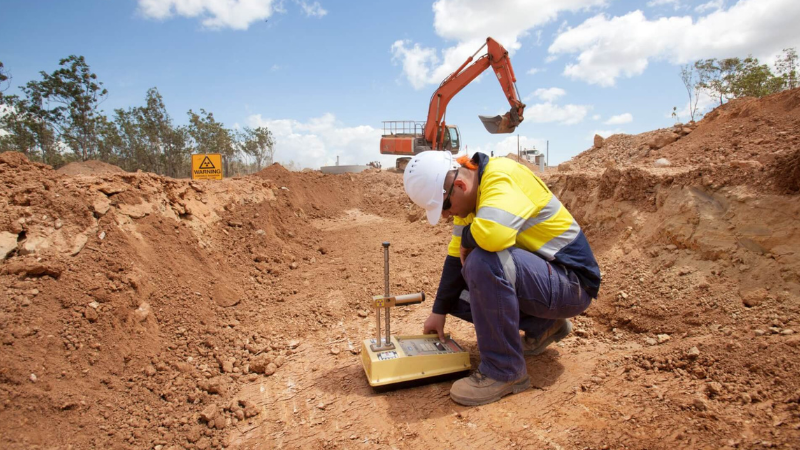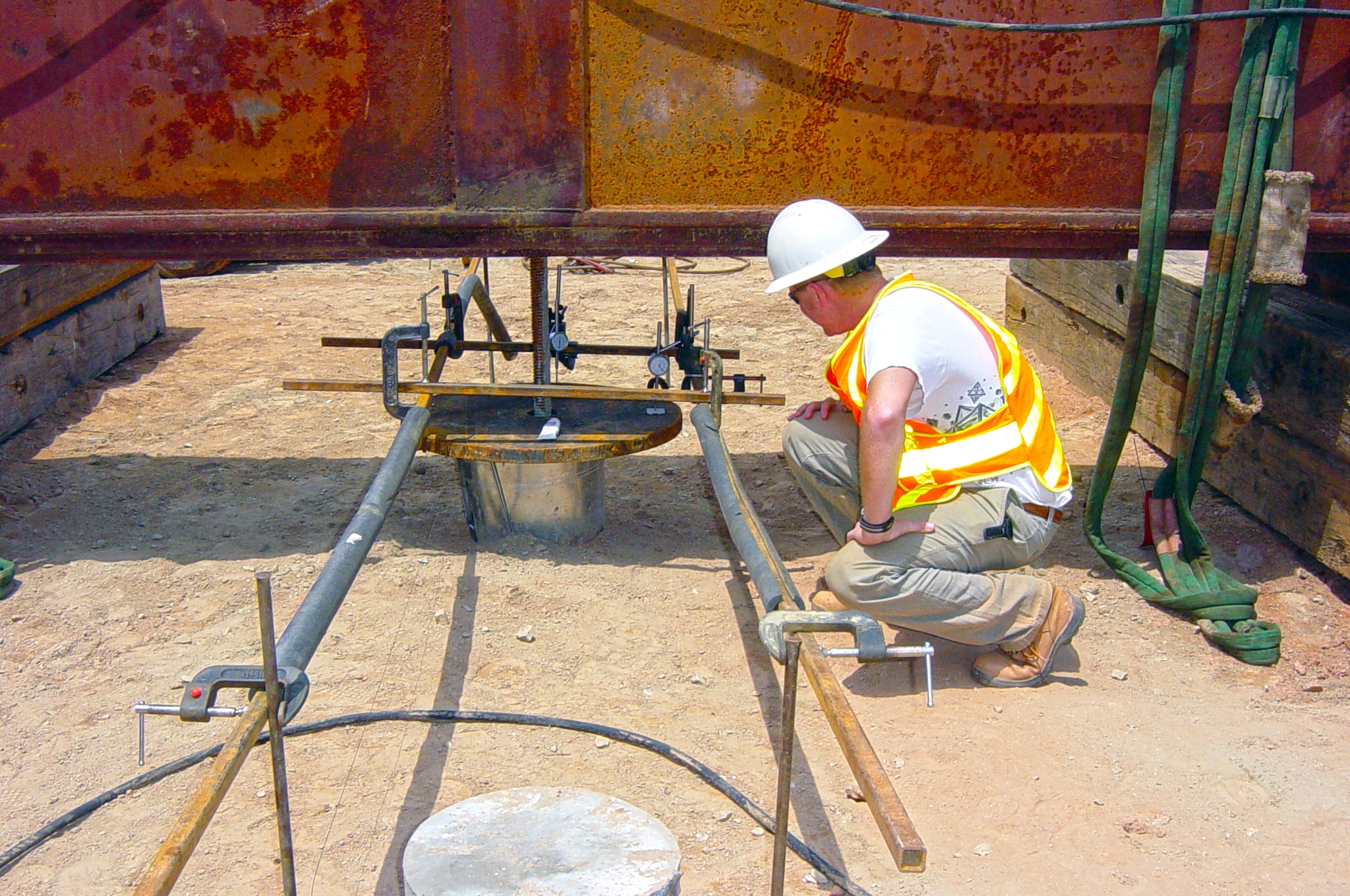Why the Geotechnical Industry Demands Ingenious Solutions Now
Wiki Article
The Necessary Contributions of Geotechnical Engineers in Evaluating Soil Actions and Foundation Design for Sustainable Facilities Growth
Geotechnical engineers function as a keystone in the world of sustainable facilities growth, where their proficiency in evaluating dirt actions directly affects the safety and long life of frameworks. By using innovative methods such as Typical Penetration Examinations and Cone Penetration Testing, they thoroughly review soil residential properties, resulting in educated decisions on foundation style. These analyses not just reduce dangers connected with differential settlement but additionally lead the means for ingenious, eco mindful techniques. As we discover the essential function they play, the implications of their payments elevate important inquiries concerning the future of framework strength and sustainability.Role of Geotechnical Engineers

In addition to website investigations, geotechnical engineers examine possible dangers such as soil liquefaction, incline security, and groundwater concerns. They use innovative design concepts to develop options that minimize these risks, making certain that layouts abide with relevant codes and standards. Their job usually includes cooperation with other design techniques, engineers, and environmental scientists to develop incorporated approaches to infrastructure growth.
Moreover, geotechnical designers contribute to sustainable practices by promoting using products and techniques that lessen environmental impact. Through their thorough understanding of dirt mechanics and geology, they play an important function in fostering safe, durable, and sustainable framework that meets the requirements of culture while protecting the atmosphere.
Soil Habits Assessment Techniques
Recognizing dirt habits is fundamental to educated decision-making in geotechnical design, as it straight influences the design and building and construction procedures. Numerous assessment methods are employed to examine soil residential properties, making certain accurate predictions of its performance under various loading conditions.One primary method is the Typical Penetration Test (SPT), which gives insights right into dirt density and consistency with the resistance encountered during infiltration. Cone Infiltration Screening (CPT) offers a continuous profile of dirt stratification and in-situ stamina specifications, enabling an extra in-depth understanding of subsurface conditions.
Research laboratory examinations, such as Atterberg limitations, unconfined compressive strength, and triaxial tests, are crucial for defining dirt behavior under controlled problems. These tests promote the decision of crucial specifications, consisting of shear permeability, compressibility, and strength.

Structure Layout Principles
Structure style concepts are important for making sure the security and long life of frameworks, as they dictate how loads are transmitted from the superstructure to the underlying soil. These concepts include various considerations, including load-bearing ability, negotiation, and side stability. A complete understanding of soil auto mechanics is crucial for geotechnical designers to examine the communication in between the soil and the foundation.One secret principle is the ideal choice of foundation kind, which may consist of superficial foundations, such as spread footings, or deep structures, like piles or caissons, depending on soil geotech engineer conditions and structural lots - civil consulting engineers. The structure must be developed to reduce differential settlement, which can bring about structural damage

Sustainable Facilities Practices
Just how can we properly integrate sustainability into infrastructure techniques? To achieve this, it is vital to embrace an all natural technique that emphasizes the relationship between geotechnical design and environmental stewardship. Lasting infrastructure methods begin with extensive site evaluations, which review dirt actions, regional ecosystems, and source availability. By comprehending these variables, designers can establish styles that decrease ecological influence while maximizing material usage.Additionally, using cutting-edge building and construction techniques, such as using low-impact foundations and recycled materials, considerably reduces the carbon impact of infrastructure projects. Geotechnical designers play a crucial role in choosing appropriate materials that improve durability and sustainability, such as utilizing geo-synthetics to enhance soil stability and lower erosion.
In enhancement, lasting framework techniques require recurring tracking and maintenance to guarantee that structures remain durable in time. This consists of executing adaptive monitoring techniques to deal with possible ecological adjustments. Collaboration amongst stakeholders-- including designers, regional communities, and policymakers-- is essential for integrating sustainability objectives right into project planning and implementation. Inevitably, these methods not just add to the longevity of frameworks but likewise advertise a much healthier setting, lining up infrastructure development with more comprehensive sustainability goals.
Case Researches and Applications
Instance studies in geotechnical engineering give important understandings right into the practical applications of dirt actions and sustainable framework practices. One noteworthy example is the building and construction of the Burj Khalifa in Dubai, where comprehensive dirt testing and analysis were conducted to assess the unique difficulties presented by the region's loose sand and high water table. Geotechnical engineers used progressed methods such as vibrant penetrating and cone penetration testing to identify the soil's load-bearing capacity, inevitably bring about the design of a deep foundation system that supports this renowned structure.An additional critical situation is the remediation of the San Francisco-Oakland Bay Bridge after the 1989 Loma Prieta quake. Geotechnical assessments disclosed the demand for dirt stabilization methods, including grouting and dirt nailing, to boost the seismic strength of the foundation. These interventions not only improved the bridge's safety but also added to its long life and sustainability.
Such study exhibit how geotechnical engineers play a crucial function in understanding soil habits and applying cutting-edge remedies to make sure the architectural stability and sustainability of framework tasks. geo tech engineering. Their competence is important in resolving the complicated challenges positioned by numerous dirt conditions throughout diverse geographic locations
Verdict
To conclude, the contributions of geotechnical engineers are important for the analysis of dirt habits and the layout of structures, which are important for sustainable facilities advancement. With the application of advanced screening strategies and innovative products, these professionals make sure the stability and security of structures while minimizing environmental influences. The combination of sustainable methods promotes resilience in infrastructure tasks, highlighting the relevance of collaboration among stakeholders to achieve efficient building and construction solutions that meet both environmental and societal demands.Geotechnical designers serve as a foundation in the realm of lasting infrastructure development, where their expertise in examining soil habits directly affects the safety and security and longevity of structures.Geotechnical designers play a critical function in the design and building and construction of infrastructure by analyzing soil and rock behavior to guarantee stability and safety. A comprehensive understanding of dirt mechanics is essential for geotechnical engineers to evaluate the communication in between the dirt and the foundation.
Geotechnical assessments exposed the need for dirt stablizing methods, including grouting and dirt nailing, to boost the seismic durability of the foundation.In final thought, the payments of geotechnical engineers are essential for the analysis of dirt habits and the style of foundations, which are essential for sustainable infrastructure growth.
Report this wiki page